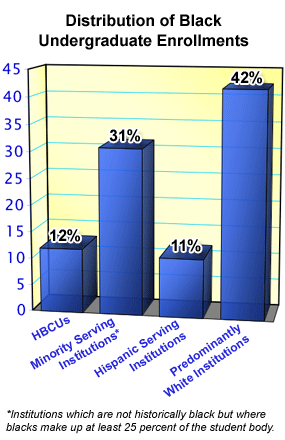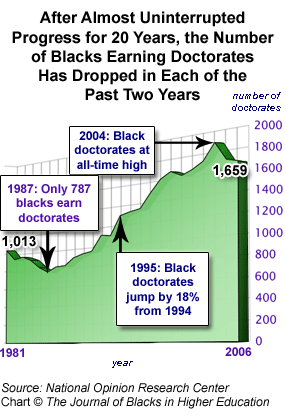Harvard’s New Financial Aid Plan: How Will It Affect African Americans?
 This week Harvard University unveiled an extensive new financial aid program aimed at attracting students from upper-middle-class families. Under the new plan, students from families with annual incomes up to $180,000 will be asked to pay a maximum of 10 percent of the family income for tuition and other fees at Harvard. For these students, the university will provide scholarship grants to make up the rest of the nearly $50,000 annual cost of attending Harvard. This week Harvard University unveiled an extensive new financial aid program aimed at attracting students from upper-middle-class families. Under the new plan, students from families with annual incomes up to $180,000 will be asked to pay a maximum of 10 percent of the family income for tuition and other fees at Harvard. For these students, the university will provide scholarship grants to make up the rest of the nearly $50,000 annual cost of attending Harvard.
In a further benefit to upper-income families, the value of a family’s primary residence will not be considered in assessing the family’s assets or wealth.
Harvard describes this initiative as a middle-class program, but some may see it as an aid to students from distinctly upper-class and affluent families. Under the new eligibility rules, families with incomes of as much as $180,000 are eligible to receive significant financial aid of $30,000 or more. Already, without benefit of this new program, Harvard students from affluent families are receiving generous financial aid. According to a recent address by William Fitzsimmons, dean of admissions and financial aid at Harvard, more than 350 undergraduates at Harvard this year whose family income is above $160,000 received financial aid. Dean Fitzsimmons added that the average “need-based” financial aid award for students from families with incomes between $100,000 and $140,000 is $21,693.
An important question is, what is the effect of the new plan on African Americans? It is clear the plan will draw more affluent blacks to Harvard. Consider, as an example, a high-achieving black student from a Detroit suburb whose family income is $150,000 or more. In the past, this student may have shied away from applying to Harvard because of the high cost and the unavailability of financial aid for a student from a family with this level of income. In many cases, Harvard would have lost this type of student to the University of Michigan, where in-state tuition costs are a fraction of Harvard’s comprehensive fees. Now the same student may apply to Harvard knowing that if accepted, he or she will not have to pay any more than they would to attend the University of Michigan.
Under this new financial aid initiative, we gauge that Harvard hopes to attract upper-income black students whom they have been losing to high-quality flagship institutions such as the University of Virginia, the University of North Carolina at Chapel Hill, the University of Michigan, and the University of California.
Harvard currently spends $98 million annually on financial aid. The new program is expected to add $22 million to Harvard’s financial aid budget. But do not be concerned about Harvard’s finances. The new and enlarged $120 million student financial aid budget is equivalent to what Harvard earns on its $35 billion endowment every two weeks!
Some Liberal Arts Colleges Appear to Be Making Solid Progress in Enrolling Low-Income Students
 Last week JBHE reported that 26 of the nation’s 30 highest-ranked liberal arts colleges have shown a decrease in their percentages of low-income students over the 2004 to 2006 period. This calculation was made by examining Department of Education data on the percentage of students receiving federal Pell Grants at each institution. Data for the 2005-06 academic year is the latest available from the Department of Education. Last week JBHE reported that 26 of the nation’s 30 highest-ranked liberal arts colleges have shown a decrease in their percentages of low-income students over the 2004 to 2006 period. This calculation was made by examining Department of Education data on the percentage of students receiving federal Pell Grants at each institution. Data for the 2005-06 academic year is the latest available from the Department of Education.
But now there is anecdotal information indicating that some of the nation’s leading liberal arts colleges are making progress. In 2006 Williams College in northwestern Massachusetts accepted 28 low-income students who came to the college through the QuestBridge program. This was 7 percent of the college’s incoming class. At Amherst College an even greater 10 percent of the first-year class were QuestBridge students.
QuestBridge recruits high-achieving, low-income students from across the nation and helps them navigate the college admissions process. Students complete a 17-page application and submit a list (in order of preference) of the 20 QuestBridge partner institutions that they would be willing to attend. The partner institutions, in order of the student’s preference, are given the opportunity to accept the student and offer him or her a full tuition scholarship.
The average combined reading and mathematics SAT score of QuestBridge students is 1320. This is significantly below the mean scores for all students at the nation’s most elite institutions. This reveals the difficulty of bringing more low-income students to these high-ranking schools without lowering the overall mean SAT score of the institution. This is important because a lower mean SAT harms the college’s ranking in the annual U.S. News & World Report survey.
Nevertheless, it should be noted that these high-ranking colleges and universities are willing to accept legacy students and athletes whose SAT scores also serve to bring down the school’s mean SAT score.
Boston University Is Creating a Massive Digital Archive of the Papers of Martin Luther King Jr.
 Boston University has announced that it is creating an online digital archive of the papers of Martin Luther King Jr., which will include more than 80,000 pages of documents from the university’s collection of Dr. King’s papers. King earned a doctorate in theology from Boston University in 1955, and he donated a vast paper archive to the institution in 1964. Boston University has announced that it is creating an online digital archive of the papers of Martin Luther King Jr., which will include more than 80,000 pages of documents from the university’s collection of Dr. King’s papers. King earned a doctorate in theology from Boston University in 1955, and he donated a vast paper archive to the institution in 1964.
In addition, the new digital archive will include 10,000 pages of documents housed at the Robert W. Woodruff Library in Atlanta. This collection was put on the auction block in 2006 by the King family. But a consortium of investors assembled by Atlanta Mayor Shirley Jackson paid $32 million to keep the collection in Atlanta. The papers were donated to Morehouse College, King’s alma mater. Additional papers from Stanford University’s Martin Luther King Jr. Research and Education Institution will also be part of the digital collection.
Boston University hopes to complete the digital archive by September 2009.
Only Six Blacks Teaching in the Nation’s 40 Leading Departments of Astronomy
 Research conducted by Donna Nelson, an associate professor of chemistry at the University of Oklahoma, has found only six black faculty members in the astronomy departments of the 40 universities with the largest research budgets in the discipline. There are nearly 600 astronomers at these 40 educational institutions. Research conducted by Donna Nelson, an associate professor of chemistry at the University of Oklahoma, has found only six black faculty members in the astronomy departments of the 40 universities with the largest research budgets in the discipline. There are nearly 600 astronomers at these 40 educational institutions.
There are African Americans who are full professors of astronomy at Penn State, the University of California at Berkeley, the University of Wisconsin, and the University of Minnesota. The blacks who are associate professors are at the University of Delaware and the State University of New York at Stony Brook.
Mixed Results for Black Students Who Earn Kalamazoo Promise Scholarships
Any student who has been in the Kalamazoo, Michigan, public school system from kindergarten through high school graduation is entitled to a Promise Scholarship. The scholarship program provides full tuition and fees at any state-operated college or university in the state of Michigan. Students who went to Kalamazoo public schools for as little as four years can earn scholarships equal to 65 percent of full tuition and fees.
Students must maintain a 2.0 grade point average in college in order to continue to receive the scholarships. The program was first instituted for the 2006 high school graduating class. That year, 302 students entered college with Promise Scholarships. About 80 percent of those students returned to school this past fall and continued to qualify for their scholarships.
For black women, 66 students from Kalamazoo enrolled in college in 2006 with the benefit of a Promise Scholarship. This year, 42, or 63.6 percent, returned to school. For black men, 51 entered college in the fall of 2006. Only 24, or 47 percent, returned to school this fall.

The scholarship program does seem to be having the beneficial effect of keeping blacks enrolled in high school. This past fall, the number of black graduates from city high schools increased by 43 percent and the number of black students entering college with Promise Scholarships increased by 18 percent.
The Resegregation of American Higher Education
A new report from U.S. Department of Education finds that African-American college students are increasingly enrolling in schools where a large percentage of the student body is black. The data shows that in 2004, 12 percent of all African-American undergraduates were enrolled at historically black colleges and universities. Another 31 percent of all black undergraduates were enrolled in colleges and universities not classified as historically black institutions but where blacks were at least 25 percent of the total student body. Eleven percent of all African-American college students were enrolled at campuses that are predominantly Hispanic.
Minority enrollments at historically black colleges have increased nearly 43 percent since 1984. At other colleges and universities where the student body is at least 25 percent black, minority enrollments have nearly tripled since 1984. One reason is because the number of colleges and universities at which blacks make up at least 25 percent of the student body has increased from 200 in 1984 to 622 in 2004.

Tennessee Governor Says Current Deal for Sale of Georgia O’Keeffe Collection Is Not in the Best Interests of Fisk University
For several years, Fisk University has been trying to raise money through the sale of artwork donated to the university in 1949 by Georgia O’Keeffe. But the university has been thwarted by a provision in the donation documents which stipulated that the collection must remain intact.
In its latest deal, Fisk has agreed to share the collection with the Crystal Bridges Museum in Bentonville, Arkansas. In return for a payment of $30 million, Fisk would send the collection to the museum for six months each year. A court hearing is scheduled for February.
 But Tennessee Governor Phil Bredesen now has gone on record as opposing the arrangement. He argues that the collection could be worth as much as $150 million and therefore Fisk is not receiving a fair offer for sharing the collection half of the time. Bredesen, a Democrat, is a graduate of Harvard University and previously served as mayor of Nashville, the city in which Fisk University is located. But Tennessee Governor Phil Bredesen now has gone on record as opposing the arrangement. He argues that the collection could be worth as much as $150 million and therefore Fisk is not receiving a fair offer for sharing the collection half of the time. Bredesen, a Democrat, is a graduate of Harvard University and previously served as mayor of Nashville, the city in which Fisk University is located.
Fisk University has stated that it will run out of operating funds if it is not permitted to make some sort of deal for the sale of the artwork.
FBI Declines to Reopen the Investigation of the 1968 Orangeburg Massacre at Historically Black South Carolina State University
 The Federal Bureau of Investigation has declined to reopen the case of three African-American college students at South Carolina State University who were shot and killed in 1968 in what has become to be known as the Orangeburg Massacre. Nine white state troopers were initially charged in the case but all were acquitted of any wrongdoing. The FBI concluded that a new prosecution would subject the troopers to double jeopardy. The Federal Bureau of Investigation has declined to reopen the case of three African-American college students at South Carolina State University who were shot and killed in 1968 in what has become to be known as the Orangeburg Massacre. Nine white state troopers were initially charged in the case but all were acquitted of any wrongdoing. The FBI concluded that a new prosecution would subject the troopers to double jeopardy.
Appointments
• Thomas F. DeFrantz was granted tenure and promoted to full professor of music and theater arts at the Massachusetts Institute of Technology. A historian of African-American dance, Professor DeFrantz has been on the MIT faculty since 1997.
Dr. DeFrantz is a graduate of Yale University. He holds a master’s degree from the City University of New York and a Ph.D. from New York University.
• John Henderson was appointed interim president of Cincinnati State Technical and Community College. Dr. Henderson served for 14 years as president of Wilberforce University.
Dr. Henderson is a graduate of Hampton University and holds a master’s degree and an educational doctorate from the University of Cincinnati.
• Phyllis Worthy Dawkins was promoted to interim vice president for academic affairs at Johnson C. Smith University in Charlotte, North Carolina. Dawkins was the dean of the College of Professional Studies and a professor of physical education.
A graduate of Johnson C. Smith University, Dr. Dawkins holds a master’s degree from Michigan State University and a doctorate in adapted physical education from Ohio State University.
• Gary Allen McGaha Sr. was named president of Atlanta Metropolitan College in Georgia. Dr. McGaha had been serving as interim president since the beginning of 2007. Previously he was vice president for academic affairs at the college.
McGaha is a graduate of Mississippi Valley State University and holds a master’s degree in political science from Bowling Green University. In 1976 Dr. McGaha was the first African American in history to earn a Ph.D. in political science from the University of Mississippi.
|
Number of African Americans Earning Doctorates Drops for the Second Year in a Row
In 2004, 1,869 African Americans were awarded doctoral degrees at U.S. universities. This was the highest number ever recorded.
But in 2005 there was a 10 percent decline in black doctoral awards. This was only the third annual decline in the past 20 years.
Now new data released by the National Opinion Research Center at the University of Chicago shows that in 2006 the number of black doctorates has declined once again. This year the decline was slight, from 1,688 in 2005 to 1,659 in 2006. This is a drop of 1.7 percent.
In 2004 blacks earned 7.1 percent of all doctorates awarded in the United States. In 2006 the percentage of all doctorates awarded to blacks has declined to 6.3 percent.

  |
 “Our man is concerned about welfare and equality, the crisis in education, and the way the mass media is distracting young people from the prize of freedom.” “Our man is concerned about welfare and equality, the crisis in education, and the way the mass media is distracting young people from the prize of freedom.”
— Cornel West, Class of 1943 University Professor of Religion at Princeton University, in a speech supporting the presidential campaign of Barack Obama at Alabama State University
|
The Black Vote Rules: Hillary Clinton’s Fatal Weakness
 It is not well known that in the 1992 and 1996 elections Bill Clinton would not have been elected president except for the black vote. In each case white voters preferred George H.W. Bush or Bob Dole. It is not well known that in the 1992 and 1996 elections Bill Clinton would not have been elected president except for the black vote. In each case white voters preferred George H.W. Bush or Bob Dole.
Today blacks make up between 20 and 25 percent of all voters who participate in Democratic presidential primaries and caucuses. In some states, such as South Carolina, which holds the nation’s third presidential nominating contest, blacks are 50 percent of Democratic Party voters.
If these black voters, in very large numbers, support the presidential bid of African-American Barack Obama, Hillary Clinton will have a difficult time amassing the delegate totals she will need to secure the nomination.
Before Obama announced his candidacy, Clinton had counted on the overwhelming support of black voters due to her husband’s persisting support among African Americans. Now the black vote may be her Achilles heel.
Harvard’s Henry Louis Gates Jr. Launches a New Venture Tracing African Americans’ Roots Through DNA Testing
.gif) Henry Louis Gates Jr., Fletcher University Professor and director of the W.E.B. Du Bois Institute for African and African-American Research at Harvard University, has launched AfricanDNA.com. The new company offers two tests, one for mitochondrial DNA, which is passed on from one’s mother. A second, paternal test, which can be analyzed for men only, traces inherited Y chromosomes. Henry Louis Gates Jr., Fletcher University Professor and director of the W.E.B. Du Bois Institute for African and African-American Research at Harvard University, has launched AfricanDNA.com. The new company offers two tests, one for mitochondrial DNA, which is passed on from one’s mother. A second, paternal test, which can be analyzed for men only, traces inherited Y chromosomes.
Customers can order DNA testing kits online for $189 each. After returning a sample of their DNA to the company, they will then receive a report tracing their family tree. Professor Gates estimates that 30 percent of the African-American male population has a white male ancestor.
In addition, the testing will typically give the customer a general geographic location of their African ancestors. At times the DNA results will show multiple matches from different areas. A panel of experts will then examine the results and give their educated opinion on a person’s probable ancestry.
The One Position in College Football That Is Still Almost Exclusively White
 A generation ago black quarterbacks were extremely rare in college football. Few coaches were prepared to entrust black players in this important leadership position on the field. Talented black athletes were steered to play as running backs or pass receivers. But now black quarterbacks are commonplace in both the college and professional ranks. A generation ago black quarterbacks were extremely rare in college football. Few coaches were prepared to entrust black players in this important leadership position on the field. Talented black athletes were steered to play as running backs or pass receivers. But now black quarterbacks are commonplace in both the college and professional ranks.
Blacks now make up about 55 percent of all athletes who win football scholarships at universities that make up America’s most prominent football programs. But there is one position where blacks are still almost nonexistent. This is the position of place kicker, the player who kicks field goals and extra points.
Even at the nation’s historically black colleges and universities, where more than 80 percent of all players are African Americans, there are very few black kickers. This past season there were only three black kickers in the nine-team Mid-Eastern Athletic Conference.
The situation in the National Football League is even worse. There are no black place kickers on the 32 NFL teams.
  |
43.5% The graduation rate in 2004 for all students at privately operated historically black colleges and universities in the United States.
34.7% The graduation rate in 2004 for all students at state-operated historically black colleges and universities in the United States.
source: U.S. Department of Education
|
For the Second Straight Year, There Appear to Be No African Americans Among Rhodes Scholarship Winners
 In 1907 Alain LeRoy Locke, later a major philosopher and literary figure of the Harlem Renaissance, was selected as a Rhodes Scholar to study at Oxford University. It is generally believed that at the time of the award the Rhodes committee did not know that Locke was black until after he had been chosen. In 1907 Alain LeRoy Locke, later a major philosopher and literary figure of the Harlem Renaissance, was selected as a Rhodes Scholar to study at Oxford University. It is generally believed that at the time of the award the Rhodes committee did not know that Locke was black until after he had been chosen.
It would be more than 50 years later, in 1962, that an African American would be named a Rhodes Scholar. That year John E. Wideman, now a famed author as well as a professor at Brown University, was selected. Seven other blacks were named Rhodes Scholars during the 1960s.
In the 1970s approximately 25 African Americans received Rhodes scholarships. Noted African Americans who were Rhodes Scholars in the 1970s include Randall Kennedy, professor of law at Harvard University, Kurt Schmoke, former mayor of Baltimore, and Franklin D. Raines, former director of the Office of Management and Budget and former CEO of Fannie Mae.
In 1978 Karen Stevenson of the University of North Carolina at Chapel Hill was the first African-American woman selected as a Rhodes Scholar.
In the 1980s, when America took a conservative turn and affirmative action pressures diminished, fewer black candidates were chosen for the Rhodes scholarship program. But in the 1990s and so far in the twenty-first century, the norm has been for one or two African Americans to be named each year to Rhodes scholarships.
But this year, for the second year in a row, it appears that there were no African Americans among the 32 Americans awarded Rhodes scholarships.
The Role of Race in Scheduling of Football Games

The University of Delaware and Delaware State University are located 45 minutes apart in one of the nation’s smallest states. In college football the two schools play in the same division but have never scheduled a game against each other. In contrast, the University of Montana and Montana State University have played more than 100 times.
Many observers believe that race has played a major role in explaining why the University of Delaware and Delaware State have never scheduled a game against each other.
Delaware is a former slave state in which blacks are nearly one fifth of the total population. The University of Delaware was once closed to blacks, and today blacks make up only 6 percent of the student body. Delaware State University is a historically black institution.
While race may have played a role in the past, it is doubtful that it is now the overriding factor in the reason why the two schools have never been scheduled to play football. This becomes apparent in the fact that the two schools play each other in almost every other intercollegiate sport.
A more logical explanation is that the University of Delaware is merely protecting its turf. The University of Delaware has a storied football history. As such, it has a major recruiting advantage, among both black and white football players, within the state of Delaware. More than 42 percent of the players on football scholarships at the University of Delaware are black. The University of Delaware is probably unwilling to risk a loss on the football field to its cross-state rival for fear of losing this recruiting advantage.
But fate intervened in this controversy. Both schools qualified for the National Collegiate Athletic Association’s Football Championship Subdivision playoffs and the rankings called for the first-ever matchup between the in-state rivals. As expected, the University of Delaware won handily 44-7.
Delaware State would like to play the University of Delaware each and every season. To date, the University of Delaware has not committed to another meeting.
John Payton Named to Head the Legal Defense Fund
 John Payton, the attorney who represented the University of Michigan in the two affirmative action cases which reached the Supreme Court, was named director-counsel and president of the NAACP Legal Defense Fund. The LDF, under the leadership of Thurgood Marshall, was the driving force behind the legal battles to desegregate higher education in the nation’s public schools. Today it tackles a wide array of legal issues concerning racial equality and civil rights. John Payton, the attorney who represented the University of Michigan in the two affirmative action cases which reached the Supreme Court, was named director-counsel and president of the NAACP Legal Defense Fund. The LDF, under the leadership of Thurgood Marshall, was the driving force behind the legal battles to desegregate higher education in the nation’s public schools. Today it tackles a wide array of legal issues concerning racial equality and civil rights.
John Payton is a graduate of Pomona College and Harvard Law School. He was a partner at the Washington law firm Wilmer, Cutler, Pickering, Hale, and Dorr.
Highly Educated Congressman Introduces Legislation to Create New Grant Program for Predominantly Black Colleges
 Democratic Congressman Danny K. Davis of Chicago has introduced legislation that would give the secretary of education broad authority to issue grants of at least $250,000 to increase higher educational opportunities for low-income black students. The Predominantly Black Institution Act of 2007 authorizes $25 million each year for grants to institutions with 1,000 or more undergraduates and where at least 50 percent of the students qualify for low-income federal student financial aid. No more than half the funds can be used for construction and no more than 20 percent of the money can be used to increase the institution’s endowment. Democratic Congressman Danny K. Davis of Chicago has introduced legislation that would give the secretary of education broad authority to issue grants of at least $250,000 to increase higher educational opportunities for low-income black students. The Predominantly Black Institution Act of 2007 authorizes $25 million each year for grants to institutions with 1,000 or more undergraduates and where at least 50 percent of the students qualify for low-income federal student financial aid. No more than half the funds can be used for construction and no more than 20 percent of the money can be used to increase the institution’s endowment.
Congressman Davis has a keen interest in higher education. He is a graduate of the University of Arkansas at Pine Bluff and holds a master’s degree from Chicago State University and a doctorate from the Union Institute in Cincinnati, Ohio.
Awards
• Patricia Timmons-Goodson, the first African-American woman to sit on the Supreme Court of North Carolina, received the William Richardson Davie Award from the board of trustees of the University of North Carolina at Chapel Hill. Timmons-Goodson earned both undergraduate and law degrees at the university.
Grants
• The AT&T Foundation issued a $200,000 grant to Stiles Hall, a private, non-profit agency founded in 1884 to provide support to the community and students at the University of California at Berkeley. The grant will be used for a program to recruit black and other minority students and help them navigate the application process at the university.
• Winston-Salem State University, the historically black educational institution in North Carolina, received a five-year, $4.7 million grant from the National Institutes of Health. The money will be used to establish a research center dedicated to eliminating racial disparities in healthcare.
|